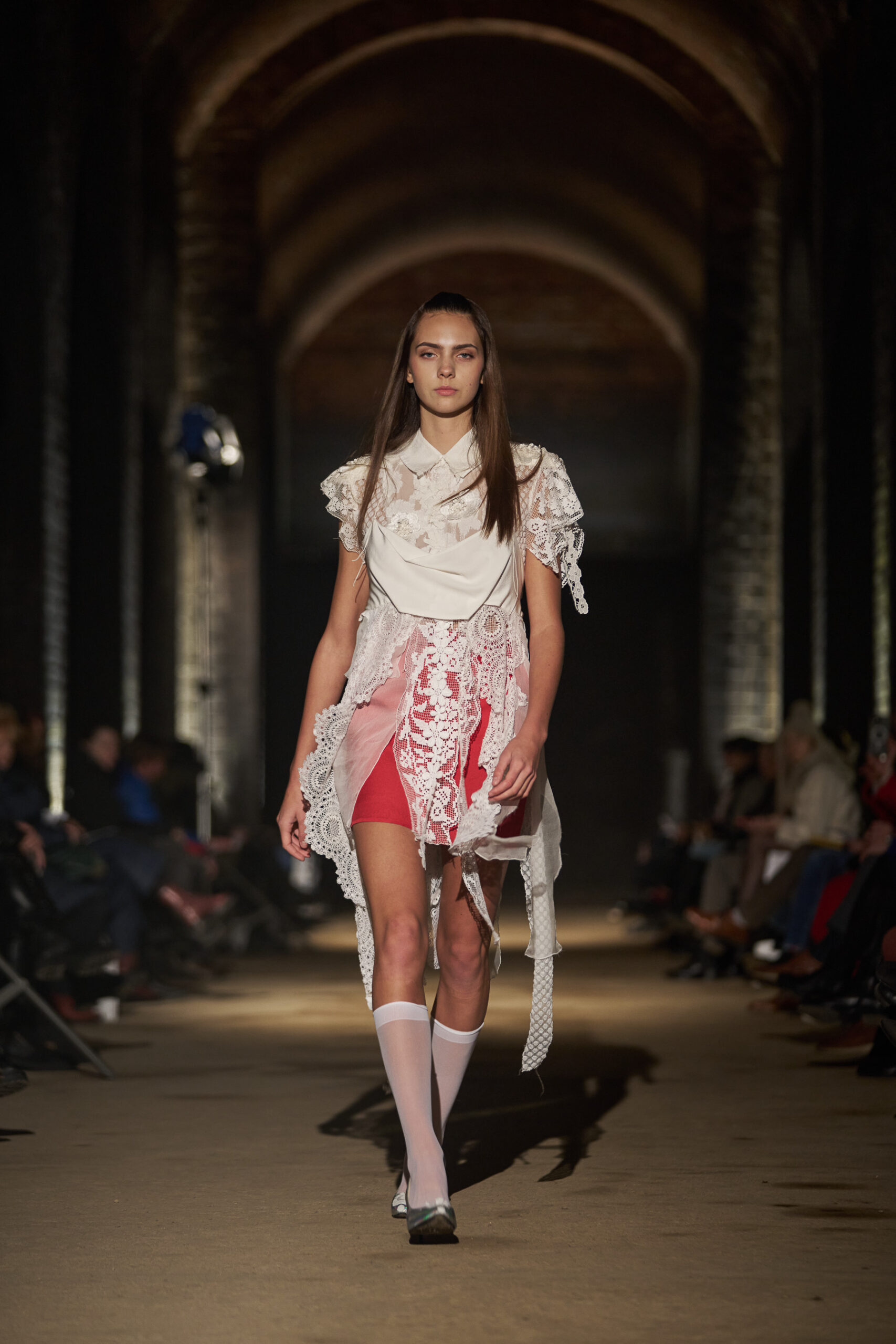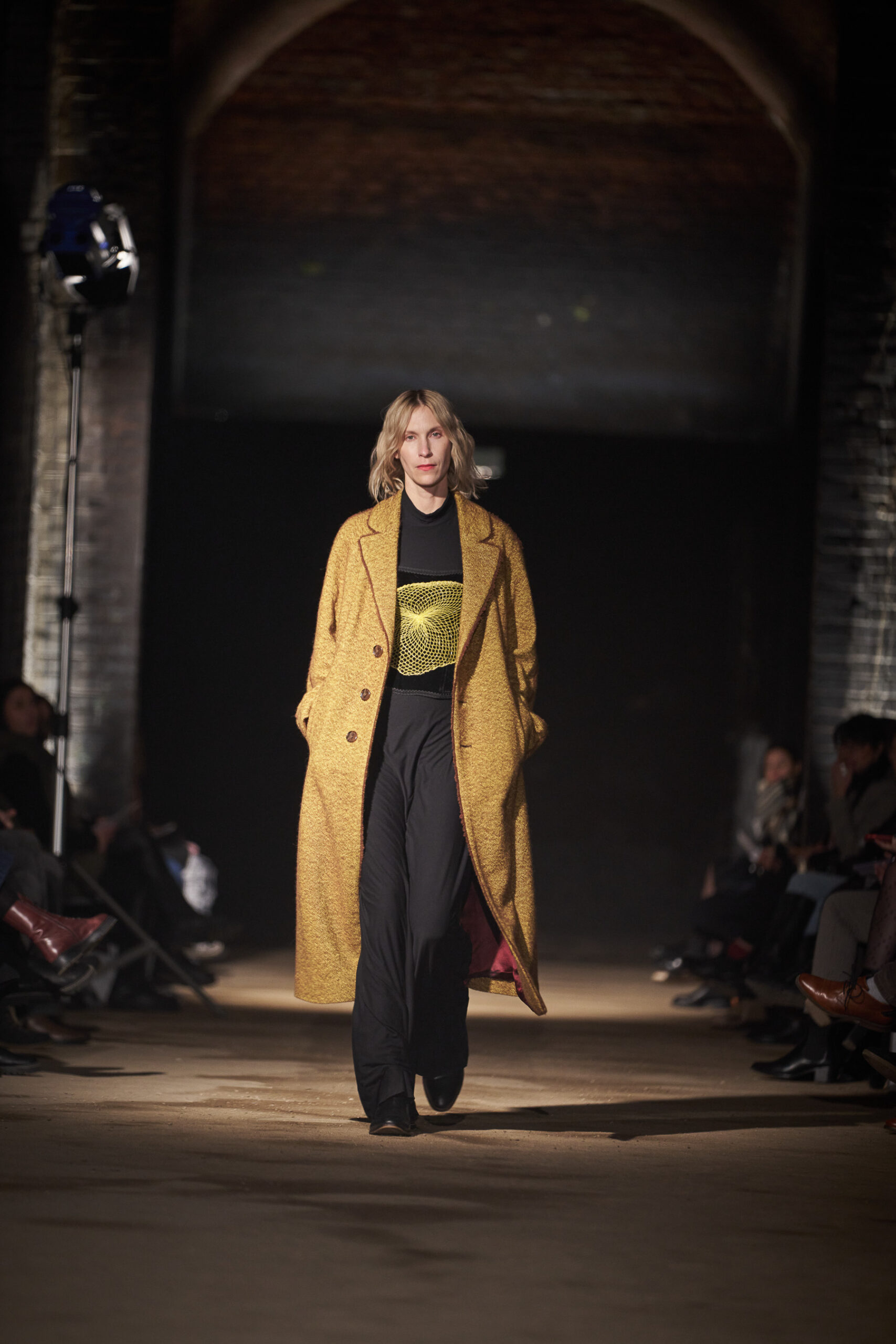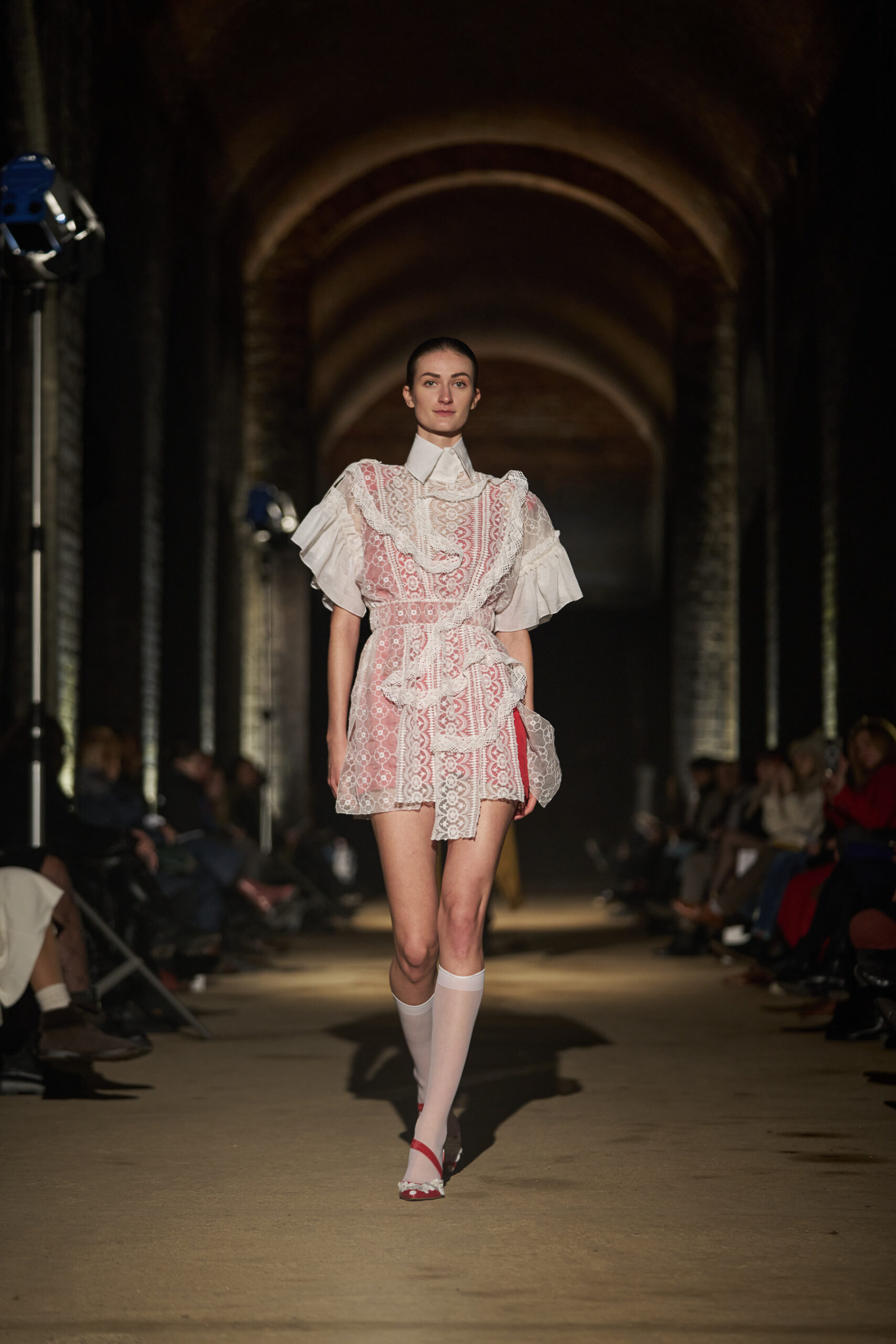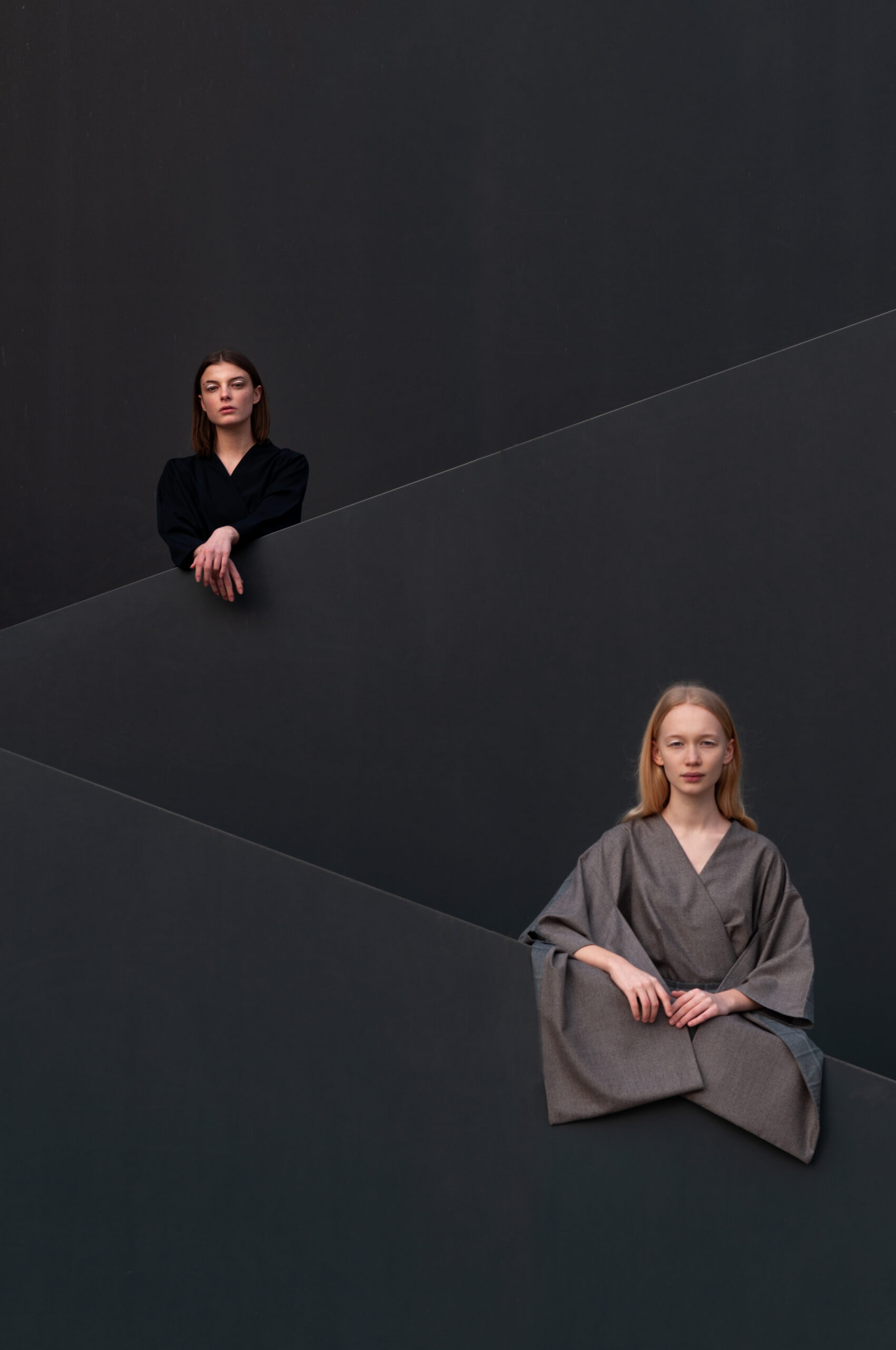This year’s fashion performance is based on the 1981 text „Simulacres et simulation”by French philosopher Jean Baudrillard. In his vision, mass media has reached the point where the process of representation has been replaced by the process of simulation. At the heart of this process lies the “simulacrum” — a virtual copy of a non-existent original. The distinction between reality and its virtual image no longer exists. The only reality is the simulacrum (the image), which shapes our perception of the world.
The acceleration of technology, generative artificial intelligence, and the relentless flow of images, headlines, videos, and algorithms to which we are exposed is so overwhelming that this forty-four-year-old text feels ever more relevant.
Designer Klára Židková has conceived this year’s performance as an evocation of our life within a web of simulacra, expressed through a contrasting dialogue between her collection of wedding dresses, crafted using traditional tailoring techniques, and a video created by visual artist Pavel Kunc using generative AI. The wedding dresses, which evoke a multitude of concrete symbols, transcend their original framework. Rather than ritual garments leading us into a happily-ever-after future, they become projection surfaces where the future is uncertain yet open. Just like our own lives — both real and virtual — they may be white canvases onto which we project our visions, our simulacra, of ourselves.
Klára Židková studied philosophy and journalism but has worked as an independent fashion designer for over ten years. She draws from the very foundations of fashion — craft and material. Wool, cotton, linen, and silk undergo hours of traditional tailoring to become bespoke pieces or ready-to-wear designs. Her work naturally merges contrasts — color with monochrome, minimalism with boldness, discipline with punk, introversion with extroversion. Upcycling and deadstock materials are at the heart of her practice. She aims to create garments that are distinctive and expressive, yet wearable and relatable. Alongside traditional techniques, she explores how new technologies, such as 3D garment simulations, can enter the creative process. Last year, during a two-month residency at Accademia Costume e Moda in Milan, she critically examined how artificial intelligence might be integrated into fashion design through a multimedia installation.



